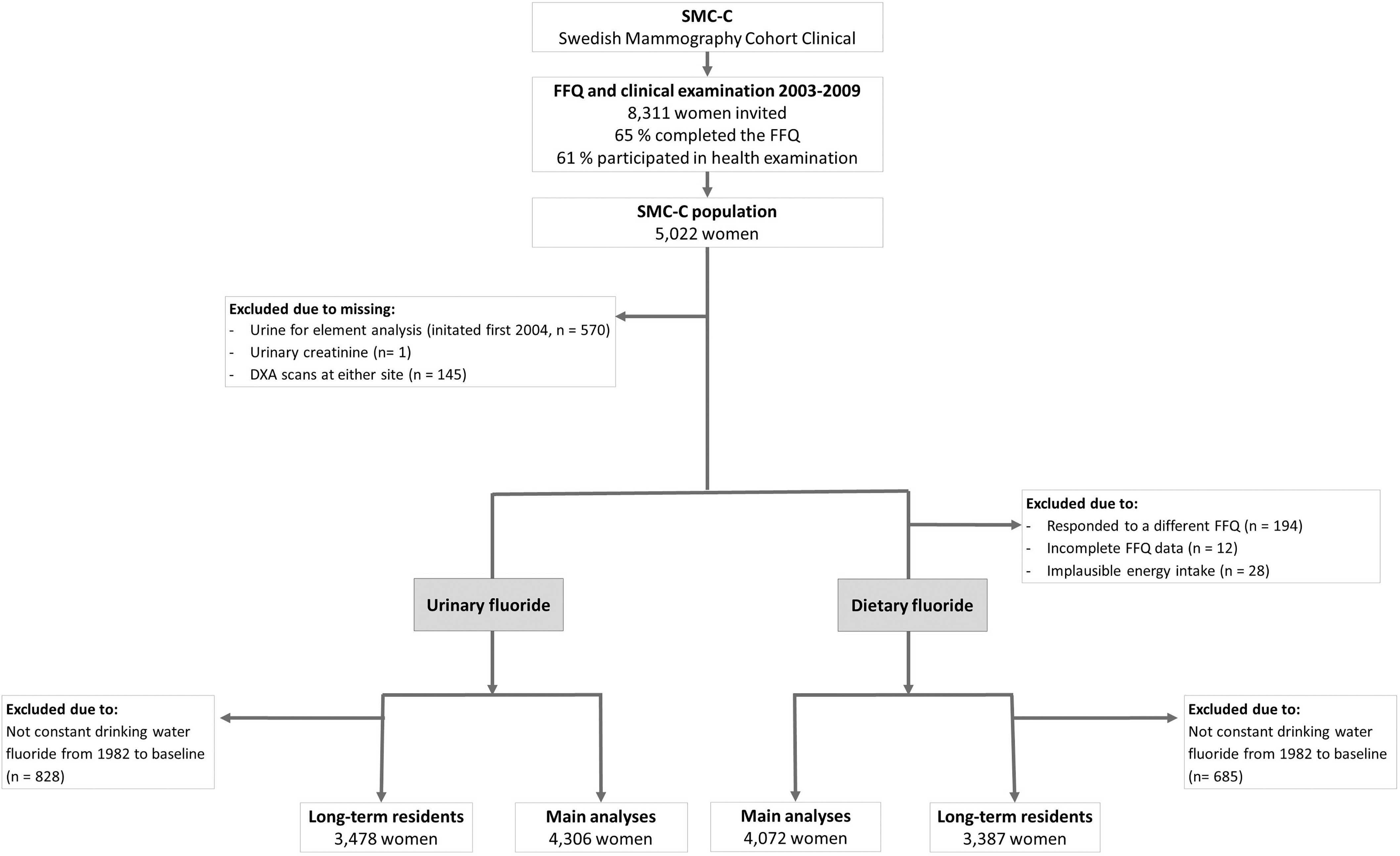Figure 1.

Flow chart of eligible participants in the study. Note: DXA, dual energy X-ray absorptiometry; FFQ, food frequency questionnaire; SMC-C, Swedish Mammography Cohort–Clinical.

Flow chart of eligible participants in the study. Note: DXA, dual energy X-ray absorptiometry; FFQ, food frequency questionnaire; SMC-C, Swedish Mammography Cohort–Clinical.